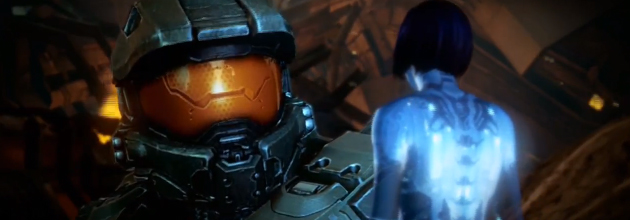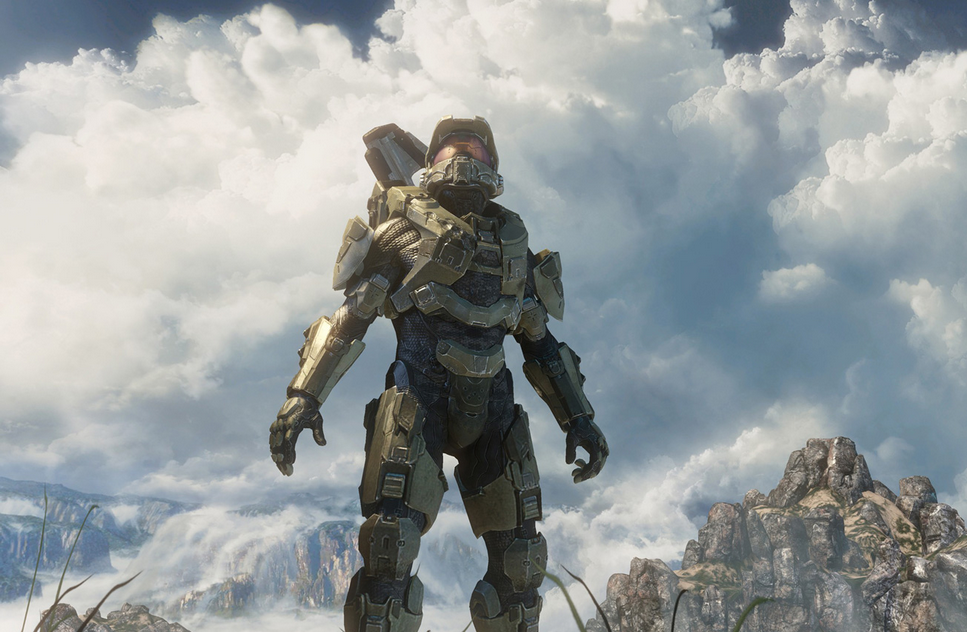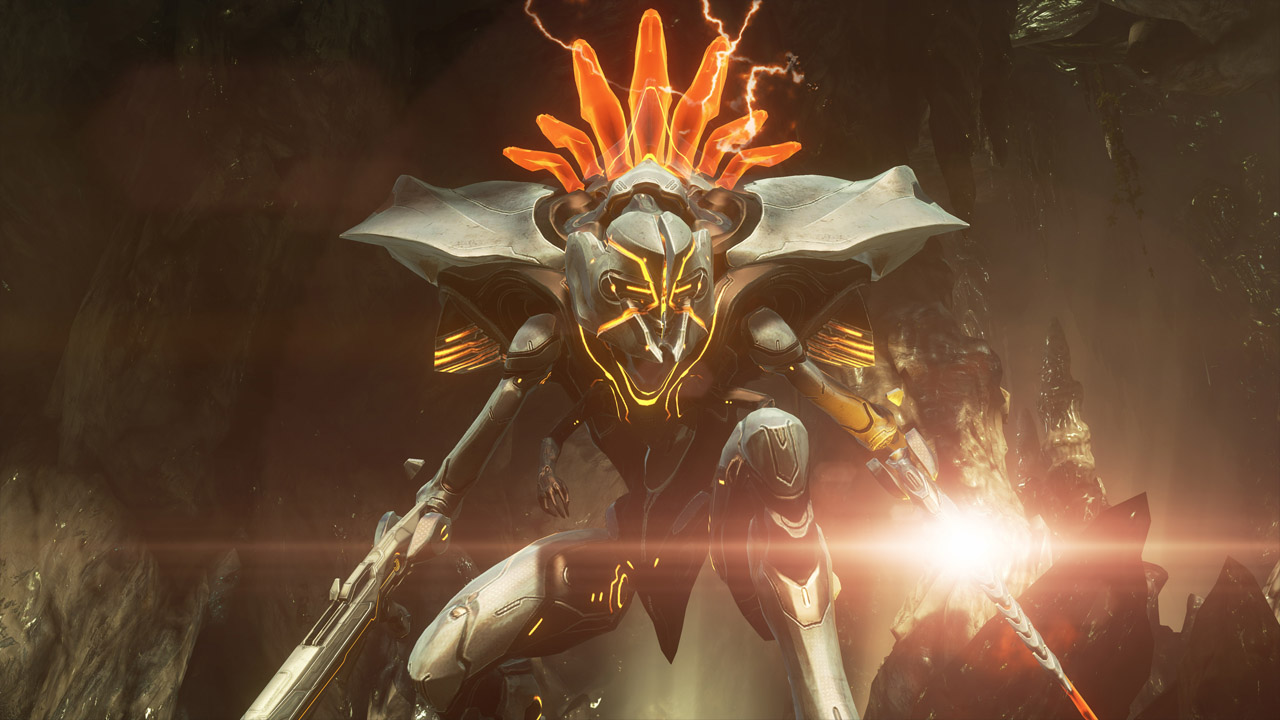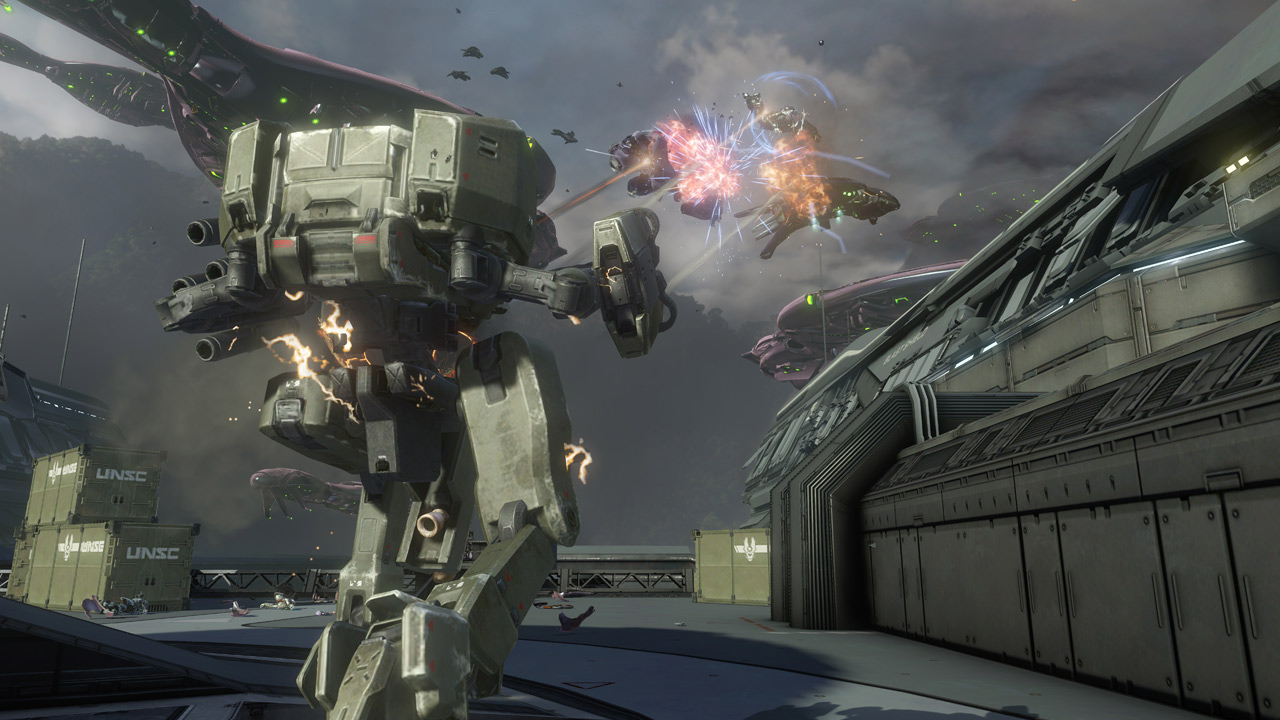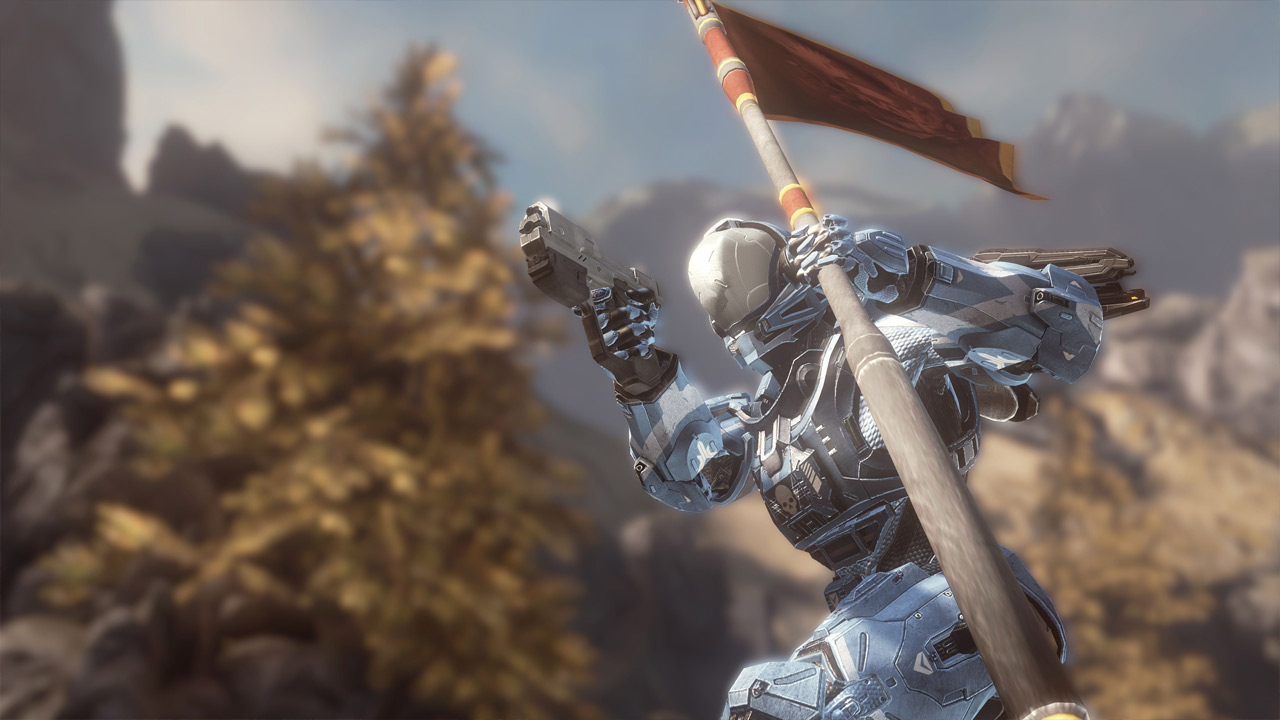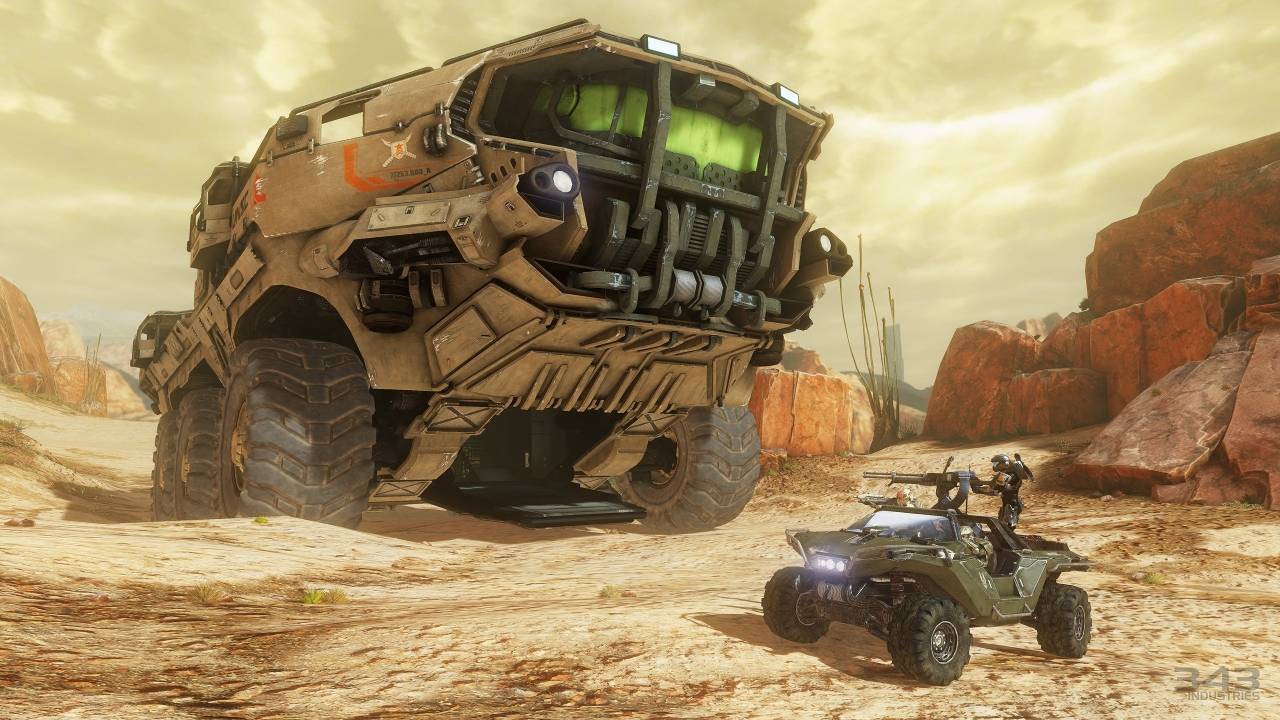Halo 4: A Beginning and an End
(WARNING: SPOILERS AHEAD)
Halo and I go back a long way. There isn’t a franchise I’ve spent more time over the last decade playing, discussing, or thinking about. It is, maybe more than any other title, how I identify myself as a gamer. So when Halo’s creator, Bungie, decided to relinquish control of the franchise to 343 Industries, I was worried. Actually, mortified might be a better word. What would happen to Master Chief and Cortana? How would the game play change? What would be added? What would be taken away? How could a brand new studio, unknown and untested, carry the mantle of my beloved Halo? Read on to find out.
I suppose I should take a moment, and get everyone up to speed on where Bungie left the Halo franchise. While their final Halo game, Halo: Reach, was released in 2010, it was actually a prequel to the series. The franchise’s two most iconic characters, Master Chief and his AI sidekick Cortana, haven’t starred in a game since Halo 3, which came out all the way back in 2007. A five year gap between titles is an eternity in video games, especially in a series like Halo, where each title builds on the story of the last. When we left Chief and Cortana at the end of Halo 3, they were trapped in a crippled ship, lost in deep space, alone and drifting towards a mysterious planet. Where would Halo’s new stewards decide to pick up the story after so long a wait?
Pretty much right where it left off, actually. While I’ll save the spoilers for later in the review, (and I’ll warn you beforehand) you learn within minutes of starting the Halo 4 campaign that our heroes are still stuck on their wrecked ship, and that four long years have passed. Alerted to an unknown presence on the ship, Cortana wakes Master Chief from his cryogenic sleep, and the old team charge into battle once more. The action of Halo 4 begins much like it did in the very first game in the series, Halo: Combat Evolved, over a decade ago. You’re forced to fight your way out of a doomed spacecraft, swarming with aliens who want nothing more than to tear you limb from limb. The setting is dark and claustrophobic. The action is close quarters and frantic. But just as in Combat Evolved, the opening level only serves to make the player’s eventual escape into the larger world of Halo all the more impressive. But this time, the Chief and Cortana do not land on another of the eponymous ringworlds. They find themselves somewhere far grander. A world called Requiem, made of equal parts majesty and malevolence. It is a place that at once answers many questions from Halo’s past, and poses new ones for its future. The story that unfolds on this new world is told well, with a cinematic flair that rivals the very best moments of prior Halo games. You’ll find yourself caught up, not only in the massive scale of the game and the events that reshape Halo’s universe, but also in the more personal journey of Chief and Cortana. These two characters, and the bond between them, plays a larger role in Halo 4 than ever before. But more on that later. I think it’s time to talk about guns.
Combat is, obviously, essential to the Halo experience. If 343 Industries had failed to capture what Bungie spent a decade perfecting, the franchise would be in serious jeopardy. Individual encounters, each one uniquely rewarding, building one upon the other to create battles of unrivaled scale has always been the hallmark of Halo combat. The famously nicknamed “30 seconds of fun” formula has been recreated flawlessly in Halo 4, with just enough additions and tweaks to keep the experience fresh. The primary addition to combat in Halo 4 is a brand new enemy faction that you will face alongside the more familiar alien races of the Covenant. Known as the Prometheans, they come in three varieties: crawler, watcher, and knight. The crawlers, while the weakest of the three Promethean forms, are still far more dangerous than the Covenant’s grunts. They’re fast, attack in packs, and can scurry straight up walls. Next are the watchers, who play a more defensive role, and love to throw wrenches into your battlefield strategy. They will surround wounded allies with shields, grab grenades out of the air and lob them back at you, and generally annoy the crap out of you. Last are the knights, and these guys are the fiercest of the bunch. They tower over Master Chief, can launch watchers out of their backs, and have the ability to teleport. Their teleportation is doubly dangerous, as they use it to both escape when taking damage, and launch surprise level-crossing attacks. After five games, fighting the same old enemies was beginning to feel a little stale, and the Prometheans are a welcome addition. They expand the battlefield, and make you constantly rethink your approach to each encounter. You are never truly safe when facing off against them.
The Prometheans bring a new suite of weapons to the battle, and wielding them feels both intuitive and fresh. Many weapons feature dual firing modes, which I found to be a welcome addition. The Promethean light rifle, in particular, was a favorite of mine. Featuring both three shot burst and single shot scoped modes, it combines the best features of the battle rifle and DMR, and I predict it will become a favorite among players. Speaking of the battle rifle and DMR, all the weapons you loved in previous Halo games return largely unchanged, which I found was a good thing. Armor abilities make a return as well, but those have gone through far more tweaks than the weaponry. Old favorites like active camo, regeneration, and thrusters return alongside new abilities including hardlight shields and a nifty trick called Promethean Vision, which lets you detect enemies through walls and other obstacles. Sprint, arguably the most popular armor ability from Halo: Reach, has been given to all players, and can be turned on an off simply by clicking your left thumb stick. Vehicles also make a return, and besides a new layer of visual flair, are largely unchanged. The amount of vehicular mayhem in Halo is unparalleled, and 343 Studios wisely stuck with Bungie’s winning formula. The one big addition they did make is the Mantis, a walking mech bristling with machine guns and missles. While I still prefer wrecking havoc with the Scorpion tank, the Mantis is a welcome addition to Halo’s stable of war machines.
The vehicles are not the only things that received a graphical overhaul. From small details like nuanced facial animations, to landscapes so alien and vast that they seem to burst through the boundaries of your television, the game’s graphics never fail to impress. The entire game shimmers with a level of fidelity and detail that I frankly thought was impossible on the XBox 360. The artists at 343 Industries must have paid close attention to the look of prior Halo games, but they were obviously not slaves to them. Halo 4 takes bold steps forward in design both large and small, and they occasionally left me stunned by the sights on my screen. Music, too, has always played a key role in crafting the Halo experience, and new composer Neil Davidge does not disappoint. While not as consistently brilliant as Marty O’Donnell’s best work at Bungie, the soundtrack to Halo 4 is still a rousing, emotional piece of work. Davidge mixes electronic elements with more traditional orchestral sounds to bring a certain edge to the Halo’s music which was lacking before. It provides the perfect backdrop to the onscreen drama, and is worth a listen all on its own. Beyond music, the voice acting in the game is also top notch, with veterans Steve Downes and Jen Taylor delivering the finest performances of their careers. They are joined by Jennifer Hale, famous for her role as Commander Shepard in the Mass Effect series. While her character, a Spartan by the name of Sarah Palmer, has a relatively small role in the campaign, I believe we’ll be seeing a lot more of her in the future.
Of course, the campaign of Halo 4 is only half the story. Multiplayer has always been an integral part of the Halo experience, and many fans were concerned that 343 would make too many changes to the classic Halo game play formula. For the most part, I believe those fears were unwarranted. 343 has provided players with a robust collection of multiplayer games which offer something for every style of player. Old favorites like Big Team Battle and Capture the Flag return, and are joined by a slew of new playlists. The amount of customization available to the player has greatly expanded, with a vast number of unlockable armor permutations available, along with a wide variety of loadout options. While custom loadouts are widely used in today’s top first person shooters, they are relatively new to Halo. Beyond choosing your starting weaponry, loadouts allow you to pick armor abilities, as well as special offensive and defensive enhancements which might give you the edge you need to win those close engagements. Another staple of modern shooters making a big splash in Halo 4 are ordinance drops. As you compete in a multiplayer match, your ordinance meter fills. Play well enough, and it will activate an ordinance drop, which can deliver you anything from extra running speed to a rocket launcher. Scoring has also been updated, with the old “kill count” system being replaced with one that factors numerous actions into a new points based system. Basic actions like assists and kills garner a small number of points. Flashier actions, like destroying vehicles or stringing together multiple kills, earn you more.
The new system rewards players for helping their teams in ways other than simply killing enemies, and serves as yet another example of 343 tweaking the Halo formula to be more in line with other popular first person shooters. Whether all of these changes were necessary, however, is debatable. By bringing in a number of features found in other games, 343 has added new layers of complexity and customization to the experience. But they also risk alienating some longtime fans who remain loyal to Halo because it had, until now, remained a relatively pure multiplayer experience, devoid of the many bells and whistles that at times can clutter games like Call of Duty. Personally, I enjoy the new features 343 has brought to the multiplayer experience, but I’m not completely sold on the points scoring system. It is heavily weighted towards multikills, awarding huge point totals to those players who can aggressively string together kill after kill. Those who choose to play a more supportive role, while earning more points than they would in the old system, will still usually find themselves at the bottom of the leaderboard.
As with previous Halo titles, cooperative multiplayer is a central part of the experience. In addition to the standard cooperative campaign and level editing options, the game features a brand new multiplayer mode known as Spartan Ops. Taking the place of Firefight mode, Spartan Ops is a weekly story based expansion of the campaign, in which you and up to three friends battle Covenant and Promethean forces through a series of five levels. The combat is challenging, but rarely frustrating for one person. However, Spartan Ops is clearly designed for cooperative play. The missions scratch that communal Covenant stomping itch almost as well as Firefight. I say almost because, unlike Firefight, there are practically no customization options in Spartan Ops, and firefight’s emphasis on racking up huge amounts of points is all but gone. Each new set of missions in Spartan Ops is preceded by a series of cutscenes, which serve to both advance the story and frame the missions. These “episodes” utilize the same voice talent and stunning CGI animation used in the campaign, and are a joy to watch. Developers have been spending a lot of time and money lately trying to figure out how to keep fans playing their games long after the campaign is over, and Spartan Ops is the most compelling example of this I’ve ever seen. I can’t wait to see where the story goes.
All that being said, Halo 4 isn’t perfect. While I found Spartan Ops to be immensely enjoyable, the lack of Firefight still hurts. There was something very therapeutic about cutting through wave after wave of enemy, with no other goal than to survive as long as possible. While I can obviously still go back to older Halo games to play Firefight, it would’ve been nice to face off against an unending horde of Prometheans. Another feature which is conspicuously absent from Halo 4 is campaign theater. Watching saved games, creating screen captures and film clips, and sharing them with friends has been a part of the Halo experience since Halo 3. While a theater mode exists for competitive multiplayer in Halo 4, there is no way to watch films of campaign or Spartan Ops. Reliving my grand campaign adventures, and capturing my greatest moments, was something I spent a lot of time doing in previous Halo games, and its absence here caught me off guard. 343 has hinted that campaign theater might be added later as part of a title update, but not having it on disk at release hints that the game was rushed. More evidence of sacrifices made to meet a release deadline can be found in the campaign itself. Prior Halo games contained a wealth of easter eggs hidden throughout each level. Finding skulls unlocked in-game modifiers, activating data terminals revealed new bits of backstory, and discovering other hidden gems just made you laugh. While there are still a number of well hidden easter eggs that will make you giggle when you find them, the skulls are completely absent. Instead, they are all available from the main menu, already activated. And while the data terminals are still in the game, instead of playing a short cutscene, they instruct you to go to the official Halo website. There, the message says, you will be able to watch the terminal’s video. Ohhhhkay. Having to pause the game and log into Halo Waypoint would be annoying enough, but the website is slow on good days, and utterly nonfunctional on bad days. While I understand Microsoft’s need to get Halo 4 onto store shelves before Black Ops 2, the omissions made to beat the competition to market are glaring.
Despite those issues, my biggest problem with Halo 4 is also the biggest spoiler in the game. So if you don’t want to know how the game ends, skip the next paragraph.
The emotional core of Halo has always been the relationship between Master Chief and Cortana. These two souls, created and conditioned to serve an uncaring military to the death with unflinching loyalty, were somehow able to form a unique and lasting bond that neither one quite understands. Their relationship exists somewhere outside the boundaries of friendship and romance, and is, more than anything, what has kept me interested in Halo for over a decade. As a sentient AI, Cortana has always had a limited lifespan, and her inevitable descent into madness and death has been a long simmering plot point which boils over in Halo 4. Many of the cutscenes in the game center on Cortana’s deteriorating condition, her increasingly desperate struggle to maintain control of herself, and the Chief’s heartfelt and steadfast commitment to save her. She is, after all, his only friend. As the game progresses, the story appears to be leading towards an eventual rendezvous with Cortana’s creator, and the writers go out of their way to make it appear as if Cortana would be saved from destruction. Except, she isn’t. In the game’s climax, she sacrifices herself to save Master Chief, saying goodbye in a beautifully staged, but utterly heartbreaking scene. Not just heartbreaking, but maddening. Maddening in that the writers led me to believe there was a chance at salvation for Cortana, only to yank that chance away at the last possible moment. Maddening in that I had to watch two beloved characters get put through a meat grinder for 10 hours with absolutely no payoff for either of them. One doesn’t survive the experience, and the other just gets tossed back in the meat grinder. I suppose it’s possible that there is some grand Search for Spock style rebirth planned for Cortana in a future Halo game, but honestly, I don’t think there is. For whatever reason, 343 wanted to end Halo 4, the first game of a trilogy, on a tragic note. It soured the entire experience for me, and has made me reluctant to play through the campaign again.
And so I’m left with the feeling that, in many ways, Halo 4 is both a beginning and an end. It is the start of a brand new trilogy, being developed by a new studio. But it is also a goodbye to Bungie, the series’ creator and caretaker for over ten years. It is the beginning of a new era for mankind, and a new mission for Master Chief, but it could be at the expense of everything he once cherished. So how harshly do I judge it? How do I compare it to the other games in Halo’s long history? Halo 4 is an all around wonderful game, with game play that is at once evolutionary and reverent to its past. It is a game of breathtaking graphics and stirring music, of bombastic spectacle and unexpected intimacy. But it is also undeniably flawed, incomplete, and in need of direction. While I wish the ending of the game left me feeling a bit more hopeful, and while it lacks some of the features of past Halo titles, I am confident that future installments will improve on this one’s shortcomings. For a consistently impressive game, marred only by a few missing pieces and one heck of a suckerpunch at the end, I give Halo 4 an 8/10.




